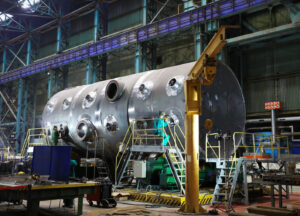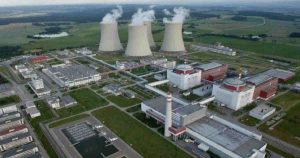Gabriel Chong gabriel.chong@csr-asia.comThe hydropower industry descended on Sarawak, Malaysia for the International Hydropower Association’s (IHA) four-day biennial congress last week. The theme for the congress this year was “Advancing Sustainable Hydropower”. This theme builds on the industry’s sustainability agenda following the reports of the World Commission on Dams and the UNEP Dams and Development almost a decade ago.
The congress was not without challenges: In the eyes of environmental and civil society groups, Sarawak was a highly controversial choice of venue. Malaysia’s biggest dam, the Bakun hydroelectric dam in Sarawak, has been called a “monument to corruption” by Transparency International. The state’s plans to build up to nine dams have been clouded by allegations of corruption and ignoring voices of indigenous communities. Critical stakeholders who were literally locked out of the congress organised an alternative conference to highlight their plight and concerns. To the credit of the IHA, the Executive Director did make an appearance at the alternative conference to listen.
The sustainability of hydropower is an important issue in Asia. Countries in the region have untapped potential for both large and small-scale hydropower projects. Hydropower could help to address energy and water security in the region which is fundamental to development. Understanding how to balance demands of different stakeholders will ensure sustainability of hydropower projects in the region.
The industry has already developed the Hydropower Sustainability Assessment Protocol (HSAP) which is a tool to assess of sustainability of hydropower projects. The HSAP was officially launched at the 2011 IHA Congress following trials in six continents. The HSAP is not a standard or a certification of sustainability but designed to be used to assess hydropower projects anywhere in the world. Governed by a multi stakeholder council, the HSAP allows for assessment of hydropower across four stages of development. Twenty sustainability topics and six criteria are assessed and evaluated. Hydropower projects are assessed on whether they meet best practice (score of 3) or have demonstrated industry leadership (score of 5). Published reports can be found here.
Having been involved in the national interpretation of the Roundtable of Sustainable Palm Oil Principles and Criteria, I believe that the challenges moving forward for the hydropower sector are similar:
Communicating science versus overcoming perception – The Special Report on Renewable Energy Sources and Climate Change Mitigation is the most comprehensive assessment of renewable energy and carbon reduction. However, translating the scientific information and communicating the positive aspects of hydropower in relation to climate change mitigation is lacking. The perception of the hydropower sector remains overwhelming negative, associating it with destruction of ecosystem services and relocation of communities. Developing credible communication that addresses perceptions of stakeholders will help bridge that gap.
Defining ‘shared benefits’ – Resettlement of indigenous communities and providing modern amenities is often stated as one of the benefits of a hydropower project. Judging from many voices in affected communities, it is clearly not seen as a benefit from their perspective. Resettlement is a cost in the construction of hydropower. By not including critical and affected communities in the discussion table to ensure hydropower brings shared benefits, the industry will continue to face challenges from affected stakeholders.
Protecting the credibility of the protocol – It is important for the governing body impress on developers using the HSAP of the need to demonstrate changes after an assessment to ensure that it is not used for green washing. Unlike the RSPO where by members can be sanctioned and removed, it is harder to police and sanction industry peers.
The industry has years of technical knowledge to build hydropower projects that are considered engineering marvels. However, building sustainable hydropower requires change to the industry business as usual way of working. The development and continuous refinement of the HSAP is a leap forward in that sustainability journey.
(Source: CSR Asia Weekly)




